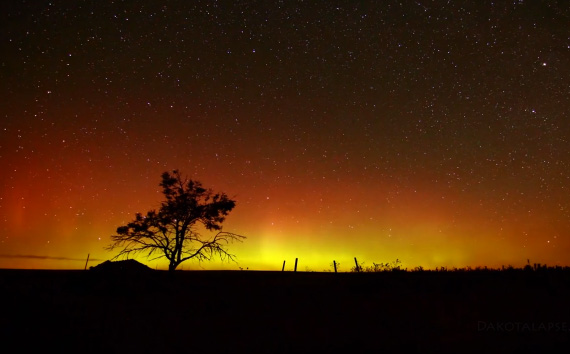There have been quite a few timelapse videos making an appearance lately and Randy Halverson’s Temporal Distortion might just be one of my favorites. His timelapse takes us into remote areas in the United States and shows us what the night sky looks like sans light pollution. It’s magical, and if you don’t believe me, have a look for yourself:
Halverson notes that much of what we see in the video is not able to be seen by the naked eye. Halverson called on his Canon 5D Mark II and Canon 60D to capture thousands of images, with exposure times anywhere from 15 to 30 full seconds each. Using an aperture of f/2.8, an ISO range of 1600-6400, and shot through Canon 16-35mm and Tokina 11-16mm lenses, Halverson spaced the individual images to be take at 3 second intervals. Each frame was shot in RAW.
“In the opening “Dakotalapse” title shot, you see bands of red and green moving across the sky. After asking several Astronomers, they are possible noctilucent clouds, airglow or faint Aurora. I never got a definite answer to what it is. You can also see the red and green bands in other shots.”

Night Time-lapse Photography of the Stars
Aside from auroras and Milky Way sightings, the video is also chock full of other galactic phenomna, such as meteors with long twisting tails called persistent trains. The tails are actually gas in the process of being ionized and Halverson photographed them perfectly as you can see in the following image. Look in between the trees and just above them, see the red squiggly line?
Most of the scenes were shot near the White River in central South Dakota during September and October 2011, there are other shots from Arches National Park in Utah, and Canyon of the Ancients area of Colorado during June 2011.
For Further Training on Star Photography & Timelapses:
Check out Photographing the 4th Dimension: TIME; an instructional eBook that delves into the complicated techniques of night sky photography, slow shutter speed, time-lapses, and more. With 64 pages of well-designed information, it is definitely a valuable read and great reference on location.
It can be found here: Photographing the 4th Dimension: TIME
Like This Article?
Don't Miss The Next One!
Join over 100,000 photographers of all experience levels who receive our free photography tips and articles to stay current:






When I first saw one of these I was absolutely blown away. What beauty. Needless to say I began working to do it myself. It isn’t as simple as placing a camera on a tripod and opening the shutter on the night sky. Halvorson may become a pioneer in a whole different area of personal expression in landscape photography. These videos, and his stills, are visually stunning.
If the exposure times were between 15-30 seconds, how can the interval for individual images be 3 seconds?
After each 15-30 second exposure, an additional 3 seconds would pass before another photograph was taken. This is usually done with a device called an intervalometer.
Please slow down. Your excitement is evident but I am trying to follow the examples while listening and they are so so fast.